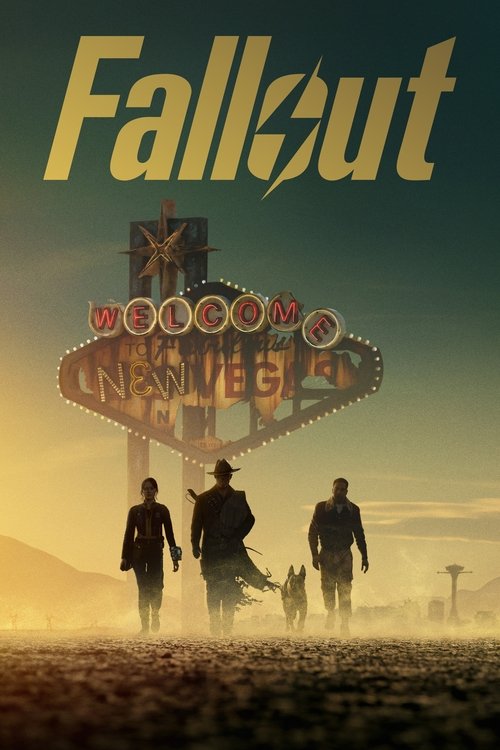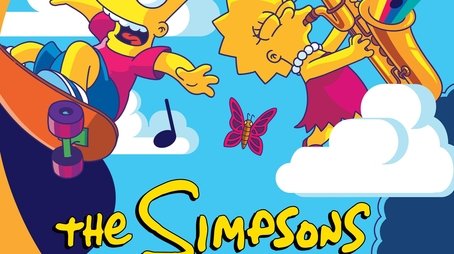
Ask Your Own Question
What is the plot?
The episode begins with Rick and Morty preparing to go on an adventure. Rick announces that they are going to the Citadel of Ricks, a place where many alternate versions of Ricks and Mortys exist. However, Morty is excited about the prospect of a fun adventure, while Rick seems more focused on the business aspect of their trip. They enter the portal and arrive at the Citadel, but instead of the expected adventure, they are met with a bustling city filled with Ricks and Mortys from various dimensions.
As they navigate through the Citadel, the narrative shifts to focus on a group of Mortys who are attending a Morty Academy. They are being taught by a Rick, who is the principal. The Mortys are shown to be in a competitive environment, where they are ranked and judged based on their performance. The principal Rick is stern and emphasizes the importance of being the best Morty, which creates a sense of pressure among the students.
Meanwhile, Rick and Morty are separated. Morty is left to explore the Citadel on his own, while Rick goes off to handle some business. Morty encounters various versions of himself, each with different personalities and experiences. He begins to feel a sense of camaraderie with the other Mortys, but also a deep-seated anxiety about his own identity and worth.
Back with Rick, he is seen interacting with other Ricks, discussing the politics and power dynamics within the Citadel. There is a sense of tension as different factions of Ricks vie for control. Rick's motivations become clearer as he navigates through the political landscape, revealing his desire for autonomy and disdain for the bureaucratic nature of the Citadel.
As the episode progresses, the focus shifts back to the Morty Academy, where a Morty named "Evil Morty" is introduced. He is portrayed as a cunning and intelligent Morty who is dissatisfied with the status quo. Evil Morty begins to plot a rebellion against the oppressive system of the Citadel, aiming to break free from the cycle of Ricks controlling Mortys.
The narrative continues to weave between the experiences of Morty and the political machinations of the Ricks. Morty becomes increasingly aware of the darker aspects of the Citadel, including the exploitation of Mortys by Ricks. He grapples with feelings of helplessness and frustration as he witnesses the injustices around him.
In a pivotal moment, Evil Morty reveals his plan to the other Mortys, encouraging them to rise up against their Ricks. He articulates a vision of freedom and independence, which resonates with the Mortys who have felt oppressed. This moment serves as a catalyst for the Mortys to unite and take action against their Ricks.
As the rebellion begins, chaos erupts within the Citadel. Mortys band together, confronting their Ricks and demanding change. The scene is filled with tension as the Mortys fight back against the Ricks who have long held power over them. The struggle is intense, showcasing the desperation and determination of the Mortys to reclaim their agency.
Meanwhile, Rick is caught in the crossfire of the rebellion. He is forced to confront the consequences of his actions and the impact of the Citadel's structure on the Mortys. The episode highlights the complexity of Rick's character as he navigates his own feelings of guilt and responsibility.
In the climax of the episode, Evil Morty's plan comes to fruition. He successfully manipulates the situation to his advantage, revealing his true intentions to overthrow the existing order. The Mortys rally behind him, and the power dynamics within the Citadel begin to shift dramatically.
The episode concludes with a powerful visual of Evil Morty standing triumphantly, having achieved a significant victory against the Ricks. The final moments leave viewers with a sense of uncertainty about the future of the Citadel and the relationship between Ricks and Mortys. The screen fades to black, leaving the implications of the rebellion hanging in the air.
What is the ending?
In the ending of "The Ricklantis Mixup," Morty and Rick arrive at the Citadel, where they encounter various versions of Ricks and Mortys. The episode culminates in a shocking twist as the Citadel's leadership is revealed to be a Rick who has been manipulating events. The episode concludes with a sense of foreboding as the Citadel is thrown into chaos, and the fate of the characters remains uncertain.
As the episode unfolds, Rick and Morty enter the Citadel, initially believing they are on a simple adventure. They are greeted by a bustling society filled with different versions of themselves. The atmosphere is vibrant, yet there is an underlying tension as they navigate through the various districts of the Citadel.
Scene by scene, we see the different lives of Ricks and Mortys. One storyline follows a Morty who is trying to escape the oppressive nature of the Citadel, feeling trapped in a cycle of being a sidekick to Ricks. This Morty, who is later revealed to be the "Morty of the Citadel," is determined to break free from the expectations placed upon him. His internal struggle is palpable as he grapples with feelings of inadequacy and the desire for autonomy.
Meanwhile, another storyline focuses on a Rick who has become disillusioned with the power structure of the Citadel. This Rick, known as "Evil Morty," is plotting to overthrow the existing order. His motivations are rooted in a desire for freedom from the constraints imposed by the other Ricks, who view him as a mere pawn. The tension builds as we see him manipulate events from the shadows, showcasing his intelligence and cunning.
As the episode progresses, the narrative shifts back to Rick and Morty, who are oblivious to the larger machinations at play. They are caught up in their own adventure, but the viewer is aware of the brewing conflict within the Citadel. The juxtaposition of their lighthearted quest against the darker undertones of the Citadel's society creates a stark contrast.
In the climax, the Citadel's leadership is revealed to be a Rick who has been orchestrating the chaos for his own gain. This revelation is shocking, as it highlights the cyclical nature of power and the futility of escape for both Ricks and Mortys. The episode ends with a sense of impending doom as the Citadel descends into chaos, leaving the fate of the characters uncertain.
Rick and Morty, having been largely unaware of the true nature of the Citadel, exit the scene, leaving behind the turmoil. The Morty who sought freedom is left to confront the reality of his situation, while Evil Morty's plans come to fruition, setting the stage for future conflicts. The episode closes with a haunting sense of unresolved tension, emphasizing the complexities of identity and the struggle for autonomy within a system that seeks to control.
Is there a post-credit scene?
In "The Ricklantis Mixup," there is indeed a post-credit scene. After the main episode concludes, the scene shifts to a dark, ominous setting within the Citadel of Ricks. The camera pans to reveal a group of Ricks gathered in a meeting room, discussing the recent events and the implications of the Citadel's governance.
The focus then shifts to a Rick who is notably different from the others, identified as Evil Morty. He stands at the forefront, revealing his true intentions and ambitions. As the other Ricks debate and argue, Evil Morty quietly observes, his expression one of calculated determination. The scene culminates with him removing a mask that he had been wearing, symbolizing his rejection of the typical Rick identity and the constraints of the Citadel's hierarchy.
This moment is significant as it hints at Evil Morty's larger plan and his desire to break free from the cycle of Ricks and Mortys, setting the stage for future conflicts and character developments in the series. The atmosphere is tense, filled with a sense of foreboding, as Evil Morty's true nature and goals are laid bare, leaving viewers with a chilling sense of anticipation for what is to come.
What is the significance of the Citadel of Ricks in this episode?
The Citadel of Ricks serves as a central hub for various Ricks and Mortys from different dimensions. In 'The Ricklantis Mixup', it highlights the complexities of Rick's character and the societal structures that exist among the Ricks. The episode explores themes of identity, power, and the consequences of Rick's actions as the Citadel becomes a microcosm of the multiverse.
How does the episode explore the character of Morty?
In 'The Ricklantis Mixup', Morty is portrayed as a character who grapples with the implications of being a Morty in a world dominated by Ricks. The episode showcases his internal conflict as he navigates the hierarchy of the Citadel, ultimately revealing his desire for autonomy and the struggle against the expectations placed upon him by Ricks.
What role does the character of Evil Morty play in this episode?
Evil Morty emerges as a pivotal character in 'The Ricklantis Mixup', representing a darker, more manipulative side of Morty. His presence in the episode serves to challenge the status quo of the Citadel, as he orchestrates a plan to break free from the control of Ricks, symbolizing a rebellion against the oppressive structures that define Morty's existence.
What is the significance of the different Ricks shown in the episode?
The various Ricks depicted in 'The Ricklantis Mixup' illustrate the diverse personalities and moralities that exist within the Rick archetype. Each Rick embodies different traits, from the authoritarian to the apathetic, showcasing the multifaceted nature of Rick's character and the existential dilemmas faced by each version of him in the Citadel.
How does the episode depict the relationship between Ricks and Mortys?
The relationship between Ricks and Mortys in 'The Ricklantis Mixup' is portrayed as deeply complex and often exploitative. The episode reveals a systemic dynamic where Mortys are often seen as subservient to Ricks, highlighting themes of abuse and dependency. This relationship is further complicated by the emergence of Evil Morty, who seeks to overturn this dynamic and assert Morty's agency.
Is this family friendly?
"The Ricklantis Mixup" from "Rick and Morty" season 3 is not considered family-friendly. The episode contains several potentially objectionable or upsetting aspects, including:
- Violence: There are scenes depicting physical confrontations and gun violence among various Ricks and Mortys.
- Dark Themes: The episode explores themes of existentialism, societal issues, and the darker sides of human nature, which may be unsettling for younger viewers.
- Language: There is frequent use of strong language and profanity throughout the episode.
- Mature Humor: The humor often includes adult themes and situations that may not be appropriate for children.
- Emotional Distress: Characters experience significant emotional turmoil, including betrayal and loss, which could be distressing for sensitive viewers.
Overall, the episode's content is geared towards an adult audience and may not be suitable for children or those who are sensitive to such themes.















